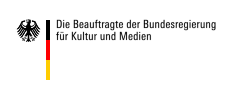Breakable Bodies
(2023)
"Breakable Bodies" is a physical research on the movement and behavior of porcelain breaking translated onto the human body to develop a movement language that can incorporate both fragility and high energy.
Research supported by Fonds Darstellende Künste within the framework of NEUSTART KULTUR, Bundesregierung für Kultur und Medien.
#TakeHeart Residency _ Fonds Darstellende Künste in partnership with tanzhaus NRW

NOthingFORever
(2022)
NOthingFORever researches the elements of sound and movement in the traditional Italian mourning practice of the Prefiche, in order to develop a physical and acoustic language that can embody and sustain grief.
In today's neo-liberal culture we not only hide the dead in cemeteries or in urns, but we often hide the dying: both as we put them away in physical places and in a metaphysical sense, when we defy mortality in the dogged prolongation of life. This exclusion of what is deemed fundamentally ‘other’ to life turns mourning into a sudden, overwhelming disruption of living which is dealt with as a highly individualized experience.
By drawing inspiration from the traditional Italian mourning ritual of the Prefiche, women who, as professional mourners, were in charge of sustaining the collective experience of mourning through chanting and lamenting the dead, I will look at sonic and performative elements of mourning that appear again and again. How do these elements connect the individual experiences of mourning to the community of mourners? How can we now situate and/or rethink the social dimensions of grief?
Research supported by Fonds Darstellende Künste within the framework of NEUSTART KULTUR, Bundesregierung für Kultur und Medien.
#TakeHeart Residency _ Fonds Darstellende Künste in partnership with tanzhaus NRW
Residency in FREIRAUM Düsseldorf, P.A.R.T.S. STUDIOS Brussels
Work in Progress Showing at ZufunftTanzt Festival Frankfurt September 2022

The Choreography of Architecture
a dialogue between dance and space
(2022)
Researching on the existing, the urban space, I wanted to develop a practice to understand it and act on it. For what or whom is a building constructed or an urban space designed? What is its history? Where is it located? How is it used and how can the movement of bodies be mapped within the space? What is the experience in this space?
During 7 months an injury towards the end of April shifted the initial plan of the research, however, giving me valuable opportunities. I discovered a new experience of movement in cities, a different rhythm in contrast to the fast pace of the crowd, I noticed architecture through my disability, where, for example, stairs became an interesting subject of study. Slowing down gave me more time to observe, to spend an afternoon sitting in a square in Brussels drawing space and movement, to find creative ways of going up and down the many staircases in Stuttgart, to feel how different materials create different sensations, how light falls through stained glass windows or how it lingers on concrete. I recorded images, glimpses of streets and corners of buildings, nooks and crannies and open spaces, framing the structure through the images. I created scores for myself and stored my feelings and experiences in architectural spaces through poetic writings and notes. I talked about the cities I passed through with people who lived and worked there and was introduced to the world of Stuttgart architects by Alina Gold. Thanks to her and her colleagues, I gained an insight into the work of city planners and architects and we had many exchanges in which we discussed and shared methods and topics linking dance, choreography and architecture.
Gefördert durch die Beauftragte der Bundesregierung für Kultur und Medien im Programm NEUSTART KULTUR, Hilfsprogramm DIS-TANZEN des Dachverband Tanz Deutschland.



(Self)Reflecting Whiteness in Somatic Dance Practices
(2021)
How is whiteness embedded in Somatics?
Why are BIPOC not so present in the somatic community?
What is my role as white, privileged dance artist who wishes to share knowledge inherited from teachers as E. Karczag or B. Bainbridge Cohen?
Through looking at the phenomenon of whiteness in somatic practices, interviewing white teachers/practitioners and BIPOC experts, I will undergo a self-directed reflective process documented in a website, that may transform my teaching and influence my artistic work.
Following these questions, I want to critically explore the past of appropriation that the practices I learned carry and reflect on the elements of whiteness that might make a somatic class a privileged and discriminatory experience.
Through my research, I would like to become more conscious WHERE and HOW whiteness manifests itself in Somatics, which aims to be an unracialized system of practices.
Gefördert durch die Beauftragte der Bundesregierung für Kultur und Medien im Programm NEUSTART KULTUR, Hilfsprogramm DIS-TANZEN des Dachverband Tanz Deutschland.


